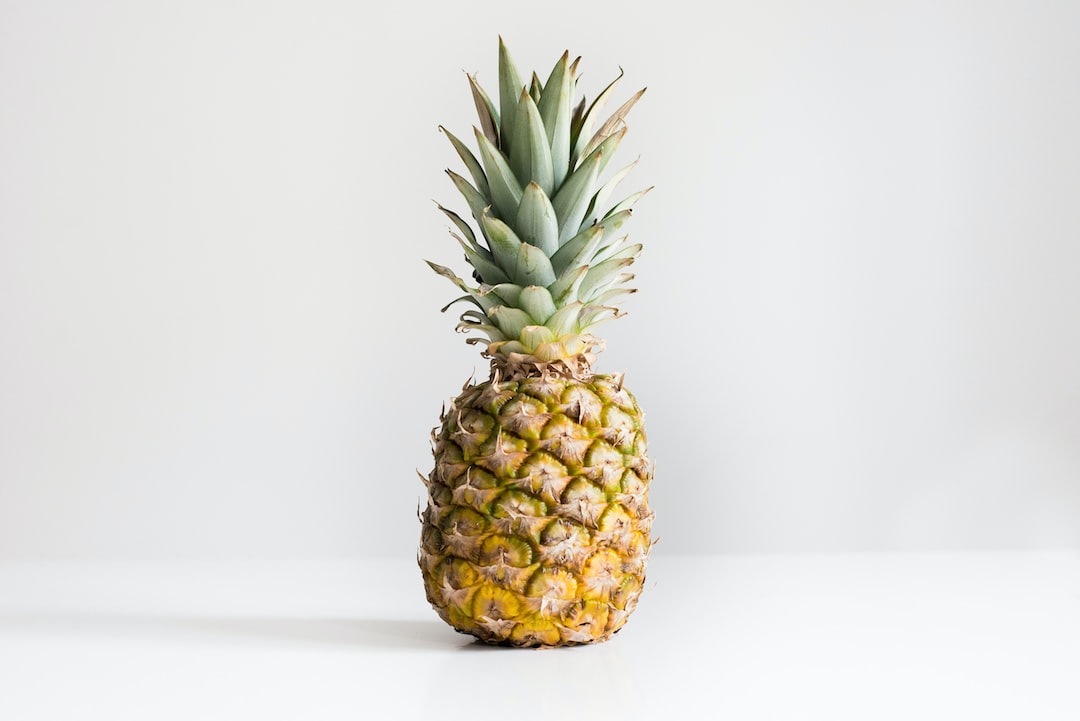From Seed to Fruit: A Guide to Growing Avocado Trees that Yield Abundant Harvests

Avocado trees are not only a beautiful addition to any garden, but they also produce delicious and nutritious fruit. Avocados are packed with healthy fats, fiber, and vitamins, making them a great addition to any diet. By growing your own avocado tree, you can save money and have a sustainable source of fresh produce right in your backyard.
Not only are avocados delicious, but they also offer numerous health benefits. They are rich in monounsaturated fats, which can help lower bad cholesterol levels and reduce the risk of heart disease. Avocados are also a good source of fiber, which aids in digestion and can help with weight management. Additionally, they contain vitamins C, E, K, and B-6, as well as folate and potassium.
Key Takeaways
- Avocado trees are worth growing because they produce delicious and nutritious fruit, and can add value to your property.
- Choosing the right avocado variety for your climate is crucial for successful growth and fruit production.
- Preparing the soil with proper nutrients and drainage is important for optimal growth and nutrient absorption.
- Proper care and maintenance of avocado trees, including watering, pruning, and fertilizing, can help prevent pests and diseases.
- Understanding avocado tree pollination and fruit set is important for maximizing fruit production and quality.
Choosing the Right Avocado Variety for Your Climate
Avocado trees are sensitive to temperature and require specific growing conditions. Before planting an avocado tree, it is important to research the different avocado varieties and choose one that is suitable for your climate.
There are three main types of avocados: Mexican, Guatemalan, and West Indian. Mexican avocados are the most cold-hardy and can tolerate temperatures as low as 20 degrees Fahrenheit (-6 degrees Celsius). Guatemalan avocados are slightly less cold-hardy and can tolerate temperatures down to 25 degrees Fahrenheit (-4 degrees Celsius). West Indian avocados are the least cold-hardy and require temperatures above 30 degrees Fahrenheit (-1 degree Celsius).
When choosing an avocado variety, consider the average winter temperatures in your area. If you live in a colder climate, opt for a Mexican or Guatemalan variety that can withstand frost. If you live in a warmer climate, you may have more options to choose from.
Preparing the Soil for Optimal Growth and Nutrient Absorption
Avocado trees require well-draining soil with a pH level between 6 and 7. Before planting an avocado tree, it is important to prepare the soil to ensure optimal growth and nutrient absorption.
Start by testing the pH level of your soil. You can purchase a soil testing kit from a garden center or send a sample to a local agricultural extension office for analysis. If the pH level is too low (acidic), you can add lime to raise it. If the pH level is too high (alkaline), you can add sulfur to lower it.
In addition to adjusting the pH level, it is important to add organic matter and nutrients to the soil. Avocado trees thrive in rich, fertile soil. You can amend the soil with compost, well-rotted manure, or other organic matter to improve its texture and nutrient content. It is also beneficial to add a slow-release fertilizer specifically formulated for avocado trees.
Planting and Caring for Avocado Trees: Watering, Pruning, and Fertilizing
| Task | Frequency | Amount | Timing |
|---|---|---|---|
| Watering | Weekly | 1-2 inches | During dry spells |
| Pruning | Annually | Remove dead or damaged branches | During dormancy |
| Fertilizing | 3-4 times per year | Organic fertilizer | Spring, Summer, and Fall |
Once you have prepared the soil, it is time to plant your avocado tree. Choose a sunny location with good air circulation for optimal growth. Avocado trees prefer full sun but can tolerate some shade.
When planting an avocado tree, dig a hole that is slightly larger than the root ball. Place the tree in the hole and backfill with soil, making sure that the top of the root ball is level with or slightly above the ground. Water the tree thoroughly after planting to settle the soil and remove any air pockets.
Watering is crucial for the health and growth of avocado trees. They require deep, regular watering, especially during dry periods. However, it is important to avoid overwatering, as this can lead to root rot. Allow the top few inches of soil to dry out before watering again.
Pruning is also important for avocado trees. Prune them to promote healthy growth and fruit production. Remove any dead or damaged branches, as well as any branches that are crossing or rubbing against each other. Pruning can also help improve air circulation and reduce the risk of disease.
Fertilizing is another important aspect of caring for avocado trees. They require a balanced fertilizer that provides essential nutrients such as nitrogen, phosphorus, and potassium. Apply the fertilizer according to the manufacturer’s instructions, usually in early spring and again in late summer.
Protecting Avocado Trees from Pests and Diseases
Avocado trees are susceptible to pests and diseases that can affect their health and fruit production. Some common pests include avocado lace bug, spider mites, and thrips. These pests can cause damage to the leaves and fruit of the tree.
To protect your avocado tree from pests, it is important to take preventative measures. Proper watering is key, as overwatering can create a favorable environment for pests. Avoid over-fertilizing, as this can also attract pests. Regularly inspect your tree for signs of infestation and take action if necessary.
Avocado trees are also prone to diseases such as root rot and fungal infections. To prevent these issues, ensure that your tree is planted in well-draining soil and avoid overwatering. Proper pruning can also help improve air circulation and reduce the risk of disease.
Understanding Avocado Tree Pollination and Fruit Set

Avocado trees require cross-pollination to produce fruit. Most avocado varieties are self-sterile, meaning they cannot pollinate themselves. This means that you will need to plant multiple avocado trees or use a pollinator to ensure successful fruit set.
When choosing avocado trees for pollination, it is important to select varieties that bloom at the same time. The flowers of avocado trees are either type A or type B, and they open at different times of the day. Type A flowers open in the morning and close in the afternoon, while type B flowers open in the afternoon and close in the morning.
To ensure successful pollination, plant one type A avocado tree and one type B avocado tree. This will provide a continuous supply of pollen throughout the day, increasing the chances of successful fruit set. Bees and other pollinators will transfer the pollen from one tree to another, resulting in fruit production.
Harvesting Avocado Fruit: How to Know When They’re Ready to Pick
Avocado fruit is ready to harvest when it is mature and has reached its full size. However, it is important to note that avocados do not ripen on the tree. They will only ripen after they have been picked.
To determine if an avocado is ready to pick, check the skin color and firmness of the fruit. The skin color will vary depending on the variety, but it should be dark green or black when ripe. The fruit should yield slightly to gentle pressure when squeezed, but it should not be too soft or mushy.
If you are unsure if an avocado is ripe, you can pick one and test it. If it is not ripe, you can leave it at room temperature until it softens. Once an avocado is ripe, you can store it in the refrigerator to slow down the ripening process.
Storing and Ripening Avocado Fruit for Maximum Flavor and Texture
To store avocado fruit, keep them at room temperature until they are ripe. Once they are ripe, you can store them in the refrigerator to extend their shelf life. However, keep in mind that refrigeration can affect the texture and flavor of avocados.
If you have unripe avocados that you want to ripen quickly, you can place them in a paper bag with a banana or apple. These fruits produce ethylene gas, which speeds up the ripening process. Check the avocados daily and remove them from the bag once they are ripe.
When it comes to ripening avocados, the “squeeze test” is a popular method. Gently squeeze the avocado in the palm of your hand. If it yields slightly to pressure, it is ripe and ready to eat. If it is too firm, it needs more time to ripen. If it is too soft or mushy, it is overripe.
Creative Ways to Use Avocado Fruit in Cooking and Recipes
Avocado fruit is a versatile ingredient that can be used in a variety of dishes. Its creamy texture and mild flavor make it a great addition to both sweet and savory recipes.
One popular way to use avocado is in smoothies. Simply blend ripe avocado with your favorite fruits, such as banana or berries, and a liquid of your choice, such as almond milk or coconut water. The avocado adds creaminess and healthy fats to the smoothie.
Avocado can also be used in salads. Slice or dice ripe avocado and add it to your favorite salad greens. It pairs well with ingredients such as tomatoes, cucumbers, and feta cheese. You can also mash avocado and use it as a dressing or spread for sandwiches and wraps.
For a sweet treat, try using avocado in desserts. Avocado can be blended with cocoa powder, sweetener of your choice, and a liquid such as almond milk to make a creamy chocolate mousse. You can also use avocado as a substitute for butter or oil in baking recipes.
Enjoying the Fruits of Your Labor for Years to Come
Growing an avocado tree requires patience and care, but the rewards are worth it. By choosing the right variety for your climate, preparing the soil properly, and providing the necessary care, you can enjoy the delicious and nutritious fruit from your avocado tree for years to come.
Not only will you have a sustainable source of fresh produce, but you will also have the satisfaction of growing your own food. Avocado trees are not only beautiful and productive, but they also provide numerous health benefits. So why not give it a try and start growing your own avocado tree today? You won’t be disappointed!



